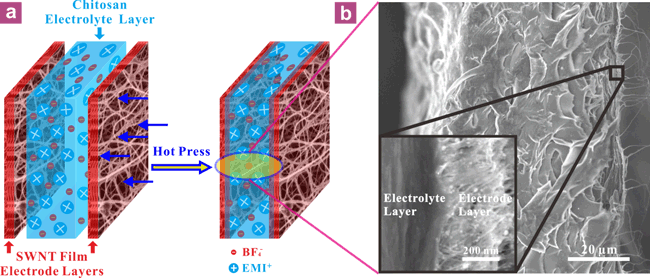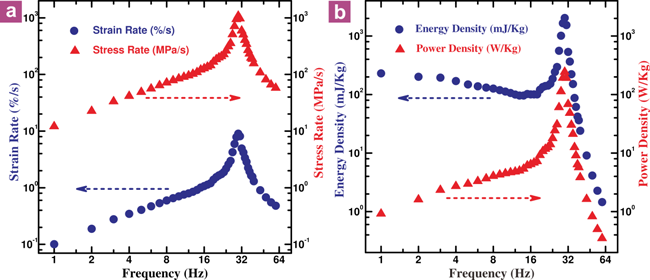Since their discovery in the early 1990s, carbon nanotubes have been the focus of research. Various types of carbon nanotubes and their macro-aggregates have been reported one after another. Their excellent mechanical and electrical properties have also been continuously excavated for the preparation of high-performance multi-functional nano-composites, supercapacitors and actuators.
The Research Group of "Nanomaterials and Mesoscopic Physics" of Advanced Materials and Structure Analysis Laboratory of Institute of Physics, Chinese Academy of Sciences / Beijing National Laboratory for Condensed Matter Physics (Preparation) has been devoted to the research of various nanomaterials for many years. In recent years, they have made a series of progress in the preparation, performance and application research of carbon nanotube macro film and its composite materials. They used the CVD method to prepare macro-scale carbon nanotube films and fibers (Nano. Lett. 2007, 7, 2307, Adv. Mater. 2009, 21, 603), and prepared using this continuous force-electricity transfer carrier. High-performance new carbon nanotube composite fiber (Nano. Lett. 2009, 9, 2855), composite film (Nanoscale 2011, 3, 3731) and wound electrochemical supercapacitor (Energy Environ. Sci. 2011, 4, 1440 ). Recently, on the basis of the above work, Li Jinzhu, a doctoral student under the guidance of Academician Xie Sishen of the research group, has made new progress in the preparation and performance research of carbon nanotube film-based artificial muscle actuators.
Many materials will produce mechanical deformations like natural muscles such as bending and stretching under the excitation of light, electricity, heat, and magnetism. They are called intelligent materials or artificial muscles, and can be widely used in bionic robots, switches, and sensors. Traditional smart materials include piezoelectric ceramic materials, memory alloys, etc. Many new polymer materials have similar properties, but they have a smaller density and a lower price. Among them, the ionic electro-actuated polymer is a material that can directly convert electrical energy into mechanical energy, including conductive polymers, carbon nanotubes, ionic polymer gels, etc. The actuation principle is the migration of ions driven by an external electric field And uneven volume deformation caused by aggregation. Their operating voltage is usually only a few volts, which makes them the material of choice for moving parts in lightweight bionic systems. However, ion migration usually needs to be performed in solution, and the resistance needs to be overcome to do work, so this type of electric actuated device has a slow response (seconds to minutes), a narrow frequency range (usually less than 1 Hz), and a relatively mechanical output capability. Weaker.
In response to these problems, the researchers used continuous carbon nanotube films as electrode layers and mechanical reinforcements, using natural polymer gels impregnated with ionic liquids as electrolyte layers, and hot-pressed to assemble sandwich-structured electrically actuated polymer devices. When an alternating electric field is applied between the two electrode layers of such a cantilever beam device, it will rapidly reciprocate. Compared with the previous ionic polymer actuators, this new type of actuator can work stably in the air environment for a long time, and its electrical performance has also improved by one to two orders of magnitude, such as ultra-fast electrical response (18 milliseconds), quite wide frequency range (tens to hundreds of Hz) and amazing mechanical output capability (1080 MPa / s, 244 W / Kg).
Such remarkable performance improvement is not only because the carbon nanotubes have good biological compatibility with the selected polymer materials and ionic liquids, but also because of the high conductivity and excellent mechanical properties of the carbon tube thin-film electrode on the mechanical properties of the entire composite device. Raise and modulate. This new type of electric actuation device can work in a wide frequency, such as a clamping device working at low frequency or a curved member of an artificial robot arm, or a power system or bionic of a light bionic flying robot working at high frequency resonance frequency. Flying insect wings.
Related results were published in Nano Lett. (2011, 11, 4636-4641).
The above-mentioned related work was supported by the Chinese Academy of Sciences, the National Natural Science Foundation of China, the Ministry of Science and Technology and the Beijing Municipal Education Commission.

Figure 1 Schematic diagram of the assembly of carbon nanotube film-based artificial muscle actuators (a) and SEM cross-sectional morphology (b)
Fig.2 The electric actuation principle diagram (ac) and experimental optical diagram (df) of the carbon nanotube film-based artificial muscle actuator

Figure 3 Ultra-fast electrical response of carbon nanotube film-based artificial muscle actuator (a) and model analysis diagram (b)

Figure 4 Frequency response of mechanical output of carbon nanotube film-based artificial muscle actuators: (a) stress and strain rate; (b) energy density and power density
Multifunctional waterproof makeup bag, waterproof shopping bag, waterproof wash bag, waterproof mommy bag
Dongguan Jinying Handbags Co.,Ltd , https://www.jinyingbeautybag.com